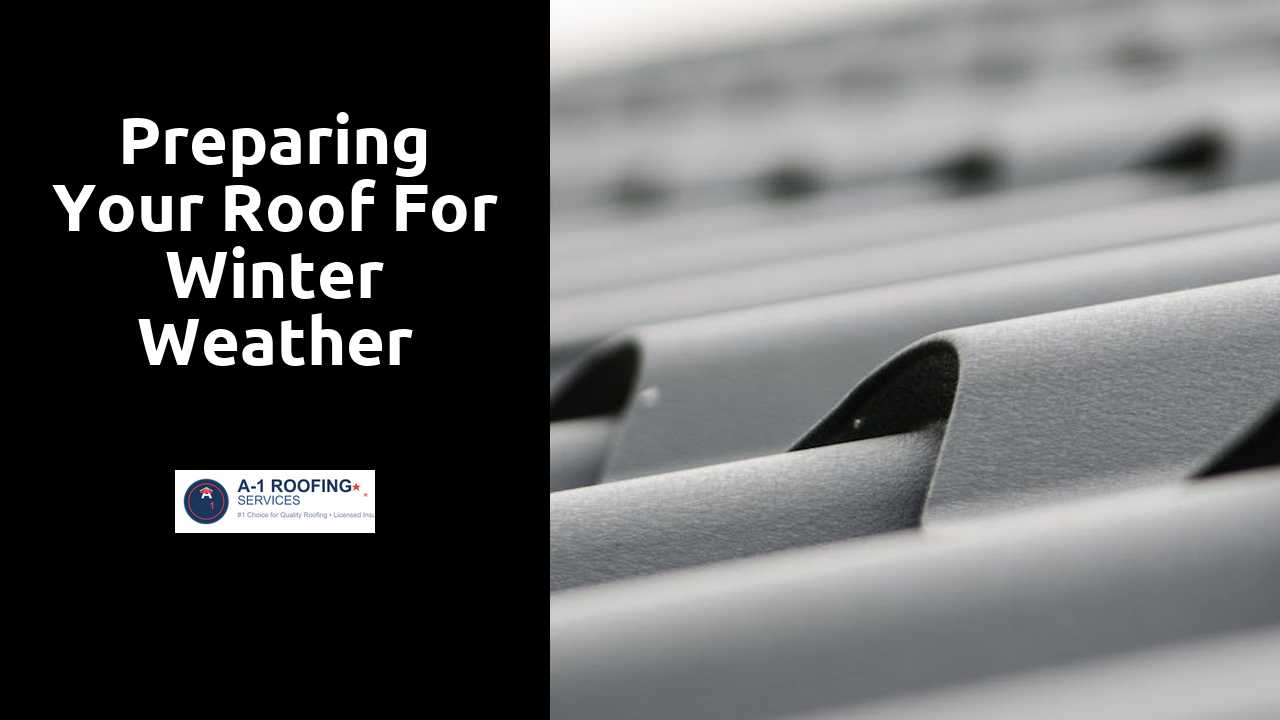
Preparing Your Roof for Winter Weather
Table Of Contents
Reinforcing Roof Structures
Winter conditions can bring significant stress to a roof's structural integrity. Strengthening beams and trusses ensures they can withstand the added weight of snow and ice. Homeowners should consider consulting a professional to assess the current state of the roof and recommend any necessary reinforcements. This proactive approach reduces the risk of sagging or cave-ins during heavy snowfall.
In addition to structural supports, the overall design of the roof plays a crucial role in managing winter weather. Steeper roof pitches can help prevent snow accumulation, allowing precipitation to slide off more easily. Furthermore, it’s important to inspect and maintain existing elements like gutters and downspouts. Proper drainage prevents unnecessary buildup, minimizing the strain on roof structures throughout the winter months.
Navigate to this website to learn more.
Enhancing Stability for Heavy Snowfall
Heavy snowfall can exert significant pressure on a roof structure, potentially leading to structural failure. Homeowners should assess the roof’s pitch and design, as steep roofs often shed snow more effectively than flat ones. Additionally, the materials used in the roof’s construction can play a critical role in its ability to withstand weight. For example, asphalt shingles may handle excessive snow better than tiles or metal roofs.
Regular maintenance is essential to enhance stability before winter begins. A thorough inspection can help identify weak points in the roof system, such as sagging areas or compromised supports. Reinforcing rafters and trusses can provide extra support, reducing the likelihood of collapse under added weight. Additionally, clearing accumulated debris from the roof will not only help prevent snow from accumulating but also lower the risk of ice dam formation, which can lead to water damage.
Evaluating Flashing Condition
Inspecting the condition of roof flashing is vital for maintaining a watertight environment during the winter months. Flashing serves as a barrier against moisture intrusion, protecting vulnerable areas such as joints, chimneys, and vents. Over time, wear and tear can lead to cracks or separation, compromising its effectiveness. A thorough examination can identify potential issues before they escalate into larger problems, saving homeowners from costly repairs.
Addressing any cracks or gaps found in the flashing is essential for ensuring that seals remain tight against moisture. Replacing damaged or rusted flashing will bolster the roof's defenses against rain, snow, and ice. Proper sealing with quality materials can enhance durability and longevity. Regular maintenance checks will not only preserve the integrity of the roof but also contribute to overall home safety during harsh winter conditions.
Ensuring Seals Against Moisture
Inspecting the flashing around chimneys, vents, and other roof protrusions is essential to prevent moisture penetration during winter. Over time, these seals can wear out or become damaged, leading to leaks that compromise the integrity of the roof structure. A thorough examination of the sealing materials will help identify any cracks or gaps that need to be addressed. Ensuring that the flashing is securely attached and in good condition is a vital step in winter preparation.
Additionally, the condition of the roof's shingles plays a significant role in moisture management. Missing or damaged shingles can create vulnerable spots where water can seep in. It is advisable to replace any compromised shingles ahead of winter. Applying a waterproof sealant to vulnerable areas can also provide extra protection against the harsh winter elements. Taking these proactive measures will enhance the roof's ability to withstand moisture-related issues during the cold season.
Clearing Nearby Trees
Overhanging branches can pose significant hazards to your roof during winter storms. Heavy snow accumulation on branches can lead to breakage, increasing the risk of fallen limbs damaging the roof. Regular inspection of nearby trees is essential; removing any dead or weakened branches can mitigate potential risks. Additionally, pruning trees can help maintain a safe distance between foliage and your roof, reducing the chances of debris accumulation during severe weather events.
Clearing nearby trees also reduces the likelihood of ice dam formation. When branches touch the roof, they can trap moisture and inhibit airflow, contributing to ice accumulation in gutters and eaves. Ensuring that trees are trimmed back will promote proper drainage and ventilation, helping your roof manage winter conditions more effectively. Taking proactive measures in tree maintenance plays a crucial role in safeguarding your roof against the damaging effects of winter weather.
Reducing Risks of Falling Branches
To mitigate the potential hazards posed by falling branches during winter storms, it is essential to assess the health and stability of any trees adjacent to your property. Dead or overhanging branches present significant risks, especially when heavy snow accumulates. Regular inspections should be performed to identify any weakened limbs that could break under the weight of snow or ice. Pruning these branches before the winter season not only reduces risks but also enhances the overall aesthetics of your landscape.
Additionally, the distance between trees and structures should be carefully considered. Trees that are too close to the house can result in damage if branches snap during extreme weather. Opt for strategic landscaping choices that incorporate adequate spacing between trees and your roofline. This helps shield your home from both falling branches and potential tree falls, ensuring that your property remains safe throughout the winter months.
Related Links
Summer Roof Maintenance Checklist for HomeownersSpringtime Roof Care Essentials to Prevent Damage